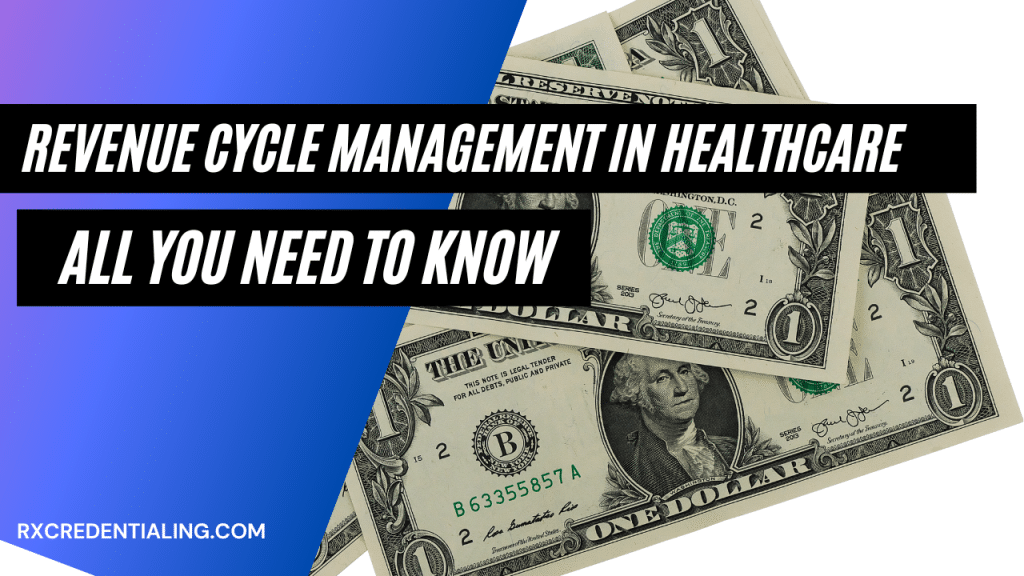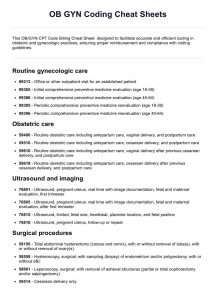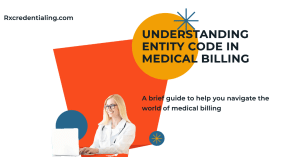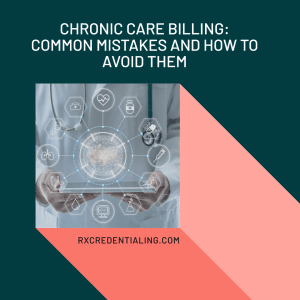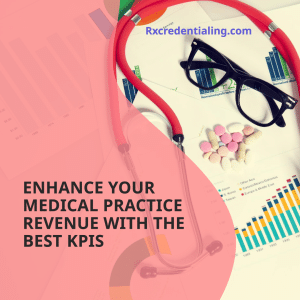RCM encompasses everything from determining patient insurance eligibility and collecting co-pays, to properly coding claims using ICD-10.
It also includes tracking claims in the system, making sure payments are collected, and addressing denied claims.
The goal of RCM is to streamline these processes to ensure the healthcare provider is paid the maximum amount in the shortest amount of time.
The Role of Revenue Cycle Management in Practice Growth
Just as a skilled physician is crucial in providing excellent patient care, robust Revenue Cycle Management (RCM) plays an integral role in the financial health of your practice.
Understanding and implementing effective RCM strategies can drive your practice to new heights while helping you avoid the pitfalls that come with mismanaged financial processes.
Well-planned Revenue Cycle Management can have a profound impact on your practice’s ability to thrive.
A vital engine that drives a healthcare entity’s financial success, RCM ensures all monetary elements mesh together to provide a seamless, proactive cashflow management system.
But what does RCM really mean for you?
In the simplest terms, RCM is the process of identifying, collecting and managing the revenue from patients, from their initial appointment to their final payment.
It involves several steps – patient registration, insurance eligibility verification, coding and billing, claim processing, and revenue collection.
By overseeing these tasks efficiently, you can optimize your revenue, enhance your productivity, and improve the financial sustainability of your practice.
Let’s delve a little deeper.
When you focus on enhancing your RCM strategies, you also improve patient satisfaction.
A streamlined billing process – one that is transparent and easy to understand – builds trust and goodwill with patients, which can lead to a higher retention rate and even new patient referrals.
The better your billing and revenue collection processes, the happier your patients are likely to be.
Moreover, an efficient RCM system can prevent money leakage. It’s not uncommon for healthcare practices to lose substantial revenue due to unpaid bills, underbilling, delayed or incorrect billing.
By eliminating these errors, you not only save money, you also free up time to focus on what truly matters: patient care.
Lastly, robust RCM processes can increase net revenues significantly by reducing the time taken to collect payments.
Faster reimbursements and improved cash flow could be your reality with the help of effective RCM.
So, what are you waiting for? Dive into the world of Revenue Cycle Management and transform your practice today. Remember, the road to prosperity is paved with efficient RCM strategies.
The Impact of Efficient Revenue Cycle Management on Profitability
You might be wondering, “How does efficient revenue cycle management play into my practice’s profitability?” Well, think about it this way.
Every time a procedure is performed, a service is provided, or a product is sold, there’s a transaction that happens.
In a perfectly efficient system, this transaction would be smooth – the service offered, payment received on time, excess costs minimized, and your revenue stream flowing freely.
But let’s face it; in the real world, things aren’t always that simple. There are delays, denials, underpayments, and confusing insurance claims.
All of these can slow down your revenue cycle, impacting your profitability. That’s where efficient revenue cycle management comes in.
Efficient Revenue Cycle Management (RCM) can have a profound impact on your practice’s profitability in numerous ways. Here’s how:
Maximizing Collections:
Efficient RCM helps ensure that your practice gets paid for every service provided. It minimizes instances of forgotten invoices, billing errors, or neglected collections – all of which could cost you money and hamper your profitability.
Reducing Billing Errors:
Inefficient billing practices can lead to errors, rejections, and denials, which can be costly. An efficient RCM system reduces these hiccups by ensuring accurate and timely submission of claims.
Improving Cash Flow:
By speeding up the revenue cycle, you’ll receive payments faster and boost your cash flow. This helps to stabilize your financial picture, responsible for the growth and sustainability of your practice.
Streamlining Operations:
Automating the management of your revenue cycle can streamline operations, saving valuable time and resources. This means your team can focus on more critical aspects of your practice, like patient care.
Note: Remember, efficient revenue cycle management is not a one-time task. It requires ongoing effort, adaptability, and a proactive approach to billing and collections.
To close, proper revenue cycle management not only optimizes your revenue but also creates a financially stable and sustainable practice.
It aids in creating a seamless transaction process and ensuring a quicker, more efficient payment system.
All these factors contribute to increased profitability – a welcome outcome for any practice owner aiming to flourish in the challenging healthcare landscape.
Breaking Down the Process of Revenue Cycle Management
The process of Revenue Cycle Management (RCM) can be complex, but it’s essential in driving your practice’s revenue and growth.
Let’s take a deeper dive into the RCM process and highlight how each stage can optimize your revenue.
RCM begins when a patient first contacts a healthcare facility for an appointment and continues until a healthcare provider’s bill is fully paid.
This cyclical process consists of several crucial steps and activities, summarized below:
Patient Pre-Registration: This step involves collecting initial patient data and scheduling appointments. This information is used to prepare billing processes even before a patient visits your clinic.
Eligibility Verification: Verifying a patient’s insurance eligibility is critical to ensuring that your medical services are covered, reducing the chances of later denied claims.
Charge Capture and Claim Submission: After a patient’s treatment, all clinical services are translated into billable charges, which are then submitted to the patient’s insurance provider.
Coding and Billing: It is vital to use appropriate medical codes for all procedures and diagnoses, as errors in coding can result in claim denials and delayed payments.
Payment Collection: After the insurance provider has paid their part, any remaining balance becomes the responsibility of the patient. Efficient collection procedures play a crucial part in avoiding unpaid bills and managing cashflow.
Claims Denial Management: If insurers reject claims, determining the reason and resolving any issues help to ensure payment is received.
Reporting and Analysis: Finally, analyzing revenue cycle metrics and data can provide key insights to improve future performance and profitability.
Each of these steps is vital in efficient Revenue Cycle Management. Making sure these operations run smoothly, and investing time and resources into optimizing these procedures can have a significant positive impact on a practice’s bottom line.
Think of the RCM process as a patient’s journey through your practice — from their first point of contact to the final resolution of their bill.
Each step along this journey presents an opportunity to improve efficiency, increase customer satisfaction, and ultimately, optimize your revenue generation.
Remember, successful RCM doesn’t merely involve having a process in place—it’s about continually analyzing, refining, and optimizing this process to ensure maximum revenue potential.
Streamlining Operations with Revenue Cycle Management
Streamlining your operations through revenue cycle management (RCM) can be a game changer for your practice.
It not only keeps the revenue flowing but also makes the process more effective and efficient. By establishing a well-defined RCM process, you can directly optimize your revenue.
Let’s dig deeper into how it works:
Registration: The process begins with a clear registration routine that captures complete and accurate patient details. Streamlining this ensures no information is lost or misrepresented, which could later lead to claim denials.
Coding: Correct and comprehensive coding is the backbone of RCM. Inefficient coding can lead to claim rejection or underpayment. A streamlined coding process guarantees codes reflect the care provided and are compliant with standard regulations.
Charge Capture and Claim Submission: Charge capture logs all the billable services rendered. Streamlining this process means that no revenue-generating services are missed.
Furthermore, efficient claim submission gets the revenue coming into your practice as quickly as possible.
Payment Posting and Follow-up: An effective RCM process actively tracks all payments, posts them correctly and swiftly, and directly follows up on all unpaid or denied claims. Streamlining these tasks ensures no potential revenue is ignored or forgotten.
Each of these elements, when streamlined, contributes to a smoother, faster, and more effective RCM process.
Implementing them not only optimizes your revenue but also gives your employees clearer roles and responsibilities, enabling greater productivity and job satisfaction.
Remember, the ultimate goal of streamlining operations with RCM is to ensure that your practice receives a fair payment for all services rendered, in a timely and efficient manner.
By harnessing the power of RCM, you can prompt your practice’s financial success and lay the groundwork for sustainable growth.
Looking at your practice’s revenue cycle management (RCM) as a totality might leave you overwhelmed.
But a simplified way to view it is a cycle comprising essential steps that follow an individual patient’s interaction with your practice – from their first appointment to the final payment of their bill.
And it’s here, in managing those individual steps effectively, that you can optimize your revenue.
Let’s break it down:
Patient Scheduling and Registration: Believe it or not, RCM begins long before your patient sets foot in your clinic. Appointment setting, insurance verification, and patient demographic capture are all key elements of this stage. Errors here can result in claim denials, so accuracy is paramount.
Service and Coding: Utilizing the correct Current Procedural Terminology (CPT) codes when billing ensures your practice gets fully compensated for procedures conducted. Inaccurate coding can lead to underpayment or even claim denials.
Claim Submission and Follow Up: Timely claim submission and tracking are vital to ensuring your clinic gets paid for its services. This step is where clear lines of communication with insurers are essential.
Payment Collection: This is the final step in the RCM process. If all previous steps have been executed accurately and efficiently, collection should be quick and uncomplicated.
Each of these steps represents an opportunity for revenue optimization. But they also present potential for loss if not managed effectively. By paying close attention and proactively managing your RCM, you can increase your clinic’s bottom line without adding a single new patient.
Just imagine:
By ensuring correct demographic input during patient registration, your denial rates could plunge. Accurate coding could maximize reimbursements for the services you offer.
Timely claim submission could expedite payments and improve your practice’s cash flow.
And an efficient collection process could minimize the time and resources spent on chasing overdue payments.
This is the reality you could be experiencing by embracing the power of effective revenue cycle management!
How Revenue Cycle Management Redefines Profitability
It’s important to remember that revenue cycle management (RCM) is a crucial element in maintaining your practice’s profitability.
It not only impacts the overall financial health of your establishment but also plays a vital role in shaping your strategic business decisions.
Effective RCM has the power to redefine profitability, making it a critical area of focus for any practice attempting to optimize their revenue.
By ensuring that all financial transactions within the practice are handled effectively and efficiently, you’re left with more time and resources to focus on what’s truly important – providing quality healthcare to your patients.
So, how does RCM specifically contribute to enhancing profitability in a healthcare practice? Here are some points to understand:
Reduces errors in billing and coding: Proper management of your revenue cycle involves the use of technology and expertise in medical coding to minimize errors in billing and claims. This ensures that reimbursements are maximized, improving your bottom line.
Speeds up payment cycles: Efficient RCM optimizes your invoicing system, which can shorten the time between providing a service and getting paid. This can greatly improve cash flow within your practice.
Improves patient satisfaction: Smooth billing and payment procedures have a direct positive impact on patient satisfaction. High patient satisfaction results in repeat visits and good word-of-mouth for your practice — both critical for your practice’s growth and profit.
Improves strategic decision-making: Accurate, timely financial data, made possible by effective RCM, provides the basis for smart business decisions that can boost profitability.
As you can see, adopting an efficient approach to RCM can significantly change the way your practice perceives and achieves profitability.
The trick is to combine technology, knowledge, and efficient processes to ensure that every component of your practice works in unison towards the same objective- increased revenue and profitability.
Adopting Revenue Cycle Management: A Step Towards Prosperity
Embarking on the journey of implementing revenue cycle management (RCM) in your healthcare practice is a concrete step towards achieving financial prosperity.
Let’s delve into the key aspects you need to consider when adopting this robust system.
Analyzing the Current State of Affairs: Understanding the existing financial framework of your practice is an essential precursor to the adoption of RCM.
This includes a comprehensive review of your billing processes, coding accuracy, denied claims, patient payment dynamics and overall financial performance.
The insights drawn from such an analysis will help establish the groundwork for effective revenue cycle management.
Establishing Clear Revenue Cycle Policies: Creating clearly defined, workable policies for each stage of the revenue cycle is crucial. These should cover patient registration, appointment scheduling, charge capture, claim submission, payment posting, and denial management.
Effective policies act as a strong foundation for the implementation of RCM.
Training Staff: RCM is not solely a financial process; it’s also a cultural shift within your practice. Proper training for your staff is critical to streamline the cycle and avoid missed opportunities for revenue capture.
Your team should fully understand the intricacies of RCM processes and their role within them.
Leveraging Technology: Revenue cycle management is significantly enhanced by the use of advanced technology.
Software solutions can automate many RCM tasks, leading to improved speed, accuracy, and efficiency.
Furthermore, analytics provided by these systems can provide crucial insights into your financial performance and areas for potential improvement.
Continuous Monitoring and Optimization: The implementation of RCM doesn’t end with the roll-out of the system. It’s an ongoing process that requires continuous monitoring and incremental improvements.
Evaluating the effectiveness of your RCM strategies will help identify areas of inefficiency and facilitate course correction as necessary.
Adopting revenue cycle management is a transformative process that can bring about tangible improvements in financial health and stability.
With careful planning, thoughtful implementation, and continuous oversight, you can leverage RCM to optimize revenue and drive growth in your practice.
In conclusion, the role of revenue cycle management is significant for the growth of your practice.
From enhancing profitability through increased efficiency to maintaining seamless operations, revenue cycle management is an indispensable element.
By adopting a well-structured RCM process, you’re not just stepping towards enhanced profitability, but also steering your practice towards sustained prosperity.
Remember, the journey towards optimized revenue and practice growth involves careful planning, thoughtful implementation, and continuous monitoring.
So rest assured, embracing revenue cycle management could be your path to creating a financially healthy and stable practice.
Hope you enjoyed this read, if you still have question please feel free to write at support@rxcredentialing.com.
Than you.


